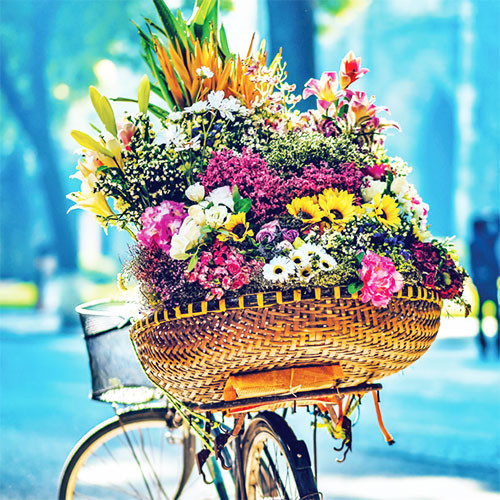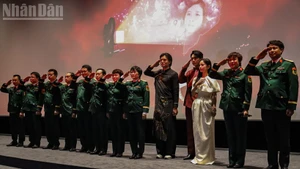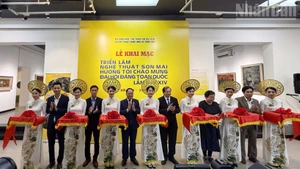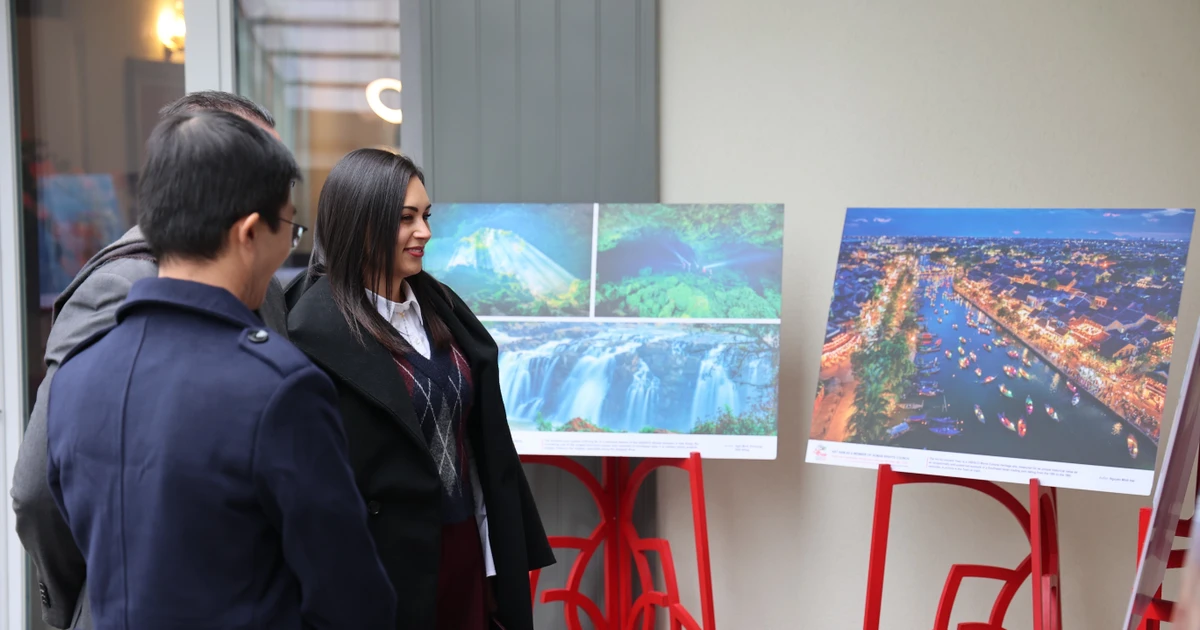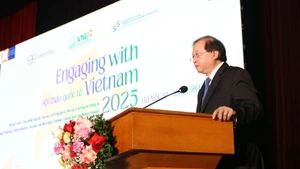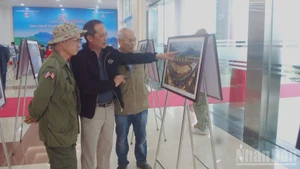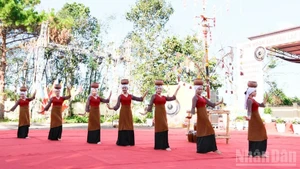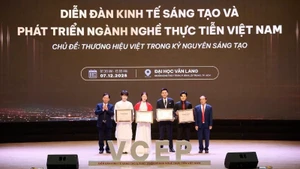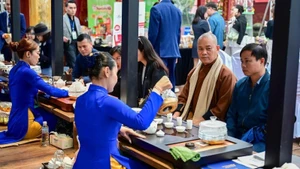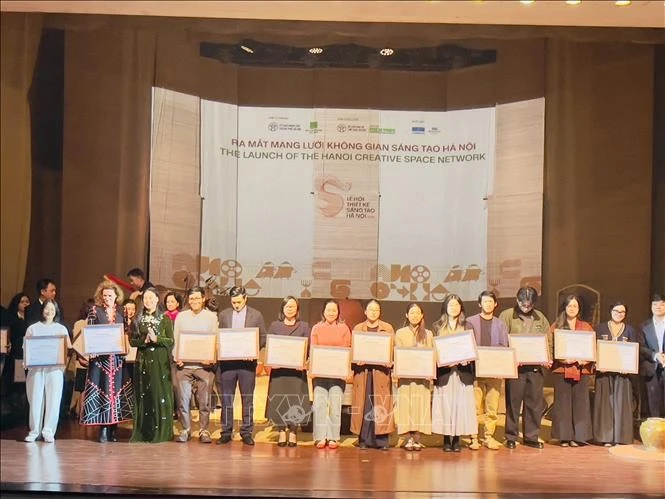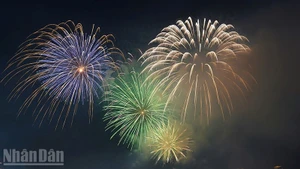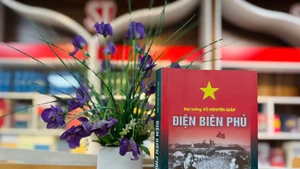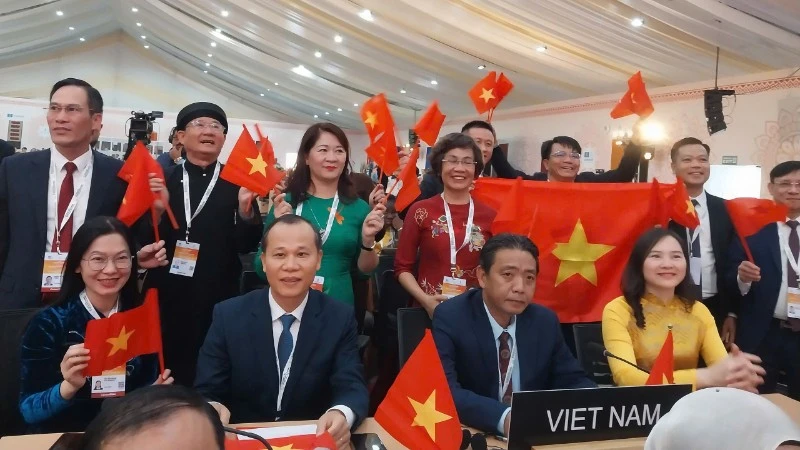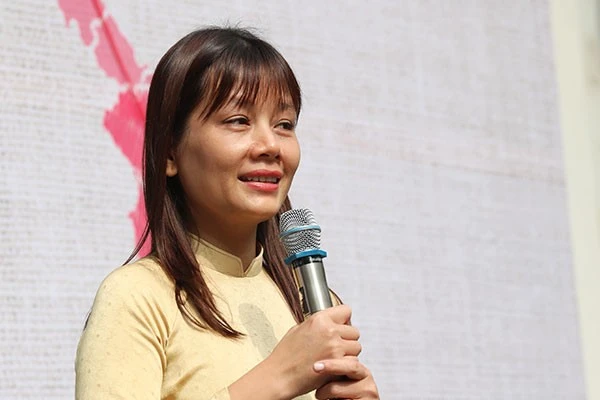From the 23rd day of the 12th lunar month, when “Ong Cong, Ong Tao” (Land Genie and Kitchen Gods) worshipping ritual was held, the flower market of Hang Luoc Street was organised. Why is this flower market open so early? According to folk beliefs, from December 23 to New Year's Eve, the universe is derelict, so demons rage. This dark force is very afraid of the colour red, so people go to Hang Luoc Street flower market to buy peach blossom branches, they are put in the house to scare them off. On the other hand, according to the Eastern concept, red is the colour of life, rebirth and luck, so no matter what flowers you buy on Tet, peach blossom branches are indispensable.
The Hang Luoc Street flower market dates back to the late 19th century, when the French filled the To Lich river, to build Dong Xuan market. Hang Luoc Street flower market, is a continuation of a flower market dating back to the 15th century, next to Cau Dong market (corresponding to present-day Hang Duong street) on To Lich river.
The market sells flowers grown in the "flower fields" northwest of West Lake, in "Vong Thi flower farm" and flowers grown in the south of the Thang Long citadel. During the Nguyen Dynasty, the market sold flowers grown in Ngoc Ha village, and Huu Tiep village.
When the French set up a "Botanical Garden" to bring flowers from temperate regions to grow, Hang Luoc Street flower market sold more flowers from the West. At the beginning of the 20th century, there were more daffodil flowers, for those who have an elegant hobby of pruning. The market also sells Bat Trang and Hai Duong ceramic vases.
Hang Luoc Street flower market is held until Lunar New Year's Eve, and on the last day of the lunar year, people not only go to buy flowers, but also go to see flowers and welcome spring, which is a beautiful culture of Hanoi’s people.
Until the last years of the 20th century, Tet flowers on Hang Luoc Street, were mainly peach blossoms and Malus Spectabilis flowers. Long-lasting, thick-winged Malus Spectabilis flowers, are placed on the ancestral altars and peach blossoms are placed within the living room.
In over 120 years of existence, the only year this flower market ever stopped, was Tet holiday in 1947, when the Capital Regiment fought on every street corner, against the French colonialists' recapture of Hanoi.
Flowers are indispensable during Tet and the Tet tray is very important. "No chicken no Tet tray". Chicken and pork are available in every market, but to have ingredients to make a four-bowl, six-plate Tet tray, with the full products of the mountains, sea and plains, it is necessary to go to Hang Buom Street.
Near Tet, these shops in the street arrange large and small baskets including: bamboo shoots, wood ear, shiitake mushrooms, Vietnamese dried pig skin, bean thread noodle, dried shrimp, dried squid, and fish fins. These basic dry ingredients are used to cook a bowl of four-taste soup or a three-colour stir-fry plate. In addition, Hang Buom Street traders, also sell firecrackers from Binh Da or imported from China.
Tet is also indispensable for drinks and sweets to offer to guests. Hang Duong Street sells all drinks and sweets, including famous rice wine and molasses wine. When the French colonialists banned the Vietnamese from cooking rice wine in the traditional way, Van Dien wine - a bottled traditional wine, filled the shelves. Hang Duong Street also sells peanut candy, sesame candy, powdered candy, khao cake (sweet short cake), pumpkin jam, malt candy from An Phu in Buoi and O mai (salted or sugared dry apricot), and even cakes to eat while drinking tea. Of course, there is no shortage of sugar in Hang Duong Street, this street sells the famous alum sugar and molasses of Son Tay and Quang Ngai regions, for women to buy and cook che kho (sweet green bean paste), to worship their ancestors.
There is the Tet tray, wine, and flowers, but the Lunar New Year will not be complete if the Tet pictures of the zodiac animal, couplets and calligraphy, aren’t hanging next to a crimson peach blossoms branch. Hanging calligraphy is not bragging about knowledge, but to encourage children to study.
In the second half of the 19th century, the section of the Hang Bo Street-Hang Thiec Street intersection, specialised in selling Do paper, ink made of stone from Ha Nam limestone and ink produced in Hung Yen, including other types of paper and ink imported from China. Near Tet, this area is bustling with the appearance of a "word market", people spread mats on the sidewalk, relax and write calligraphy, while selling pre-written couplets. Coupled sentences and words are written on red paper, but bereaved families must use yellow or green paper.
When the national language and French characters became popular, the Confucian word lost its place, and the calligraphers of Tet on Hang Bo Street, gradually became less and less.
Tet is the celebration of the lunar new year, celebrating the new and hoping for innovation, so everyone's appearance must be new.
Hang Dieu Street actually has only a few houses selling cigarettes, this street mainly makes shoes. Before Tet, well-to-do families come to this street to measure their feet, to order a pair of shoes for Tet.
At the beginning of the 20th century, near Tet, this street was crowded with women and girls on motorbikes, flocking to buy Vietnamese wooden clogs (also known as Saigon clogs).
As for the money exchange on Hang Bac street, people are coming in and out, to change and prepare cash, for the custom of giving small amounts of money to their children and grandchildren during Tet holiday. In the book People and Scenes of Hanoi, cultural writer Hoang Dao Thuy wrote that: "Although the Tet market in Hanoi's Old Quarter is only around an area of "36 streets", the women and girls, when shopping at the market, all wear ao dai,".
From the second half of the 20th century, Hanoi no longer had a Tet market on the streets in Hanoi's Old Quarter. But Hang Luoc Street flower market still exists to this day.
Hang Bo "word market" disappeared for a long time, but suddenly came back to life, today's "word market" is next to the historic Van Mieu-Quoc Tu Giam (Temple of Literature Complex). The calligraphers not only write calligraphy in Confucian characters, but also write the national language script.
